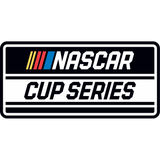
At Talladega, always on lookout for 'Big One'
As a crew chief this weekend, you are constantly worried about getting caught up in the Big One. You know it can even happen in practice. As I mentioned earlier this week, once they shake down the car and everyone, driver, crew chief and engine tuner, are happy with the car, you won't see them practice much.
Over the years, we have seen cars at Talladega as well as Daytona simply get torn up even before the race starts, so the risk/reward simply isn't there to practice a lot. Like I also mentioned, aside from a few tweaks, once you unload at Talladega, you basically got what you got.
Come Sunday, though, it's 500 miles, which is 188 laps. It doesn't matter whether your car is running in the front, middle or back of the pack, because it is simply a relief to see that car come back by every lap. It means another lap off the board that your driver has dodged the big wreck.
Everyone knows what the beast is. It's multiple cars running so close together and when one has an issue, most around it have the same issue. You simply hate to see that many cars getting torn up in a blink of an eye. You just have to anticipate it happening and deal with it if your car is included in it. It's just extremely hard to do.
This weekend for these 12 Chase guys, especially for those top four or five in points, it'll be something they will be nail-biting on until they see the checkered flag. Heck, for that matter, we have even seen big wrecks at the checkered flag or just past the checkered flag. It's almost like you don't breathe a sigh of relief until you see your car pull into the garage.
There are a lot of drivers that enjoy racing at Daytona and Talladega. Other than some of the short tracks, races at the big superspeedways are some of the most exciting racing you are going to see.
downlevel descriptionThis video requires the Adobe Flash Player. Download a free version of the player.
Now, you will hear owners, drivers, crew chiefs and even fans say restrictor plates are dangerous like a gun. I look at it differently from that. A gun isn't dangerous. A gun is dangerous when it gets in the hands of dangerous people.
To me, a restrictor plate isn't dangerous. It is just that sometimes we have a driver that will make a bonehead move in the middle of a big pack and the result is a bunch of race cars torn up. No one is more vocal about his own bonehead move than Carl Edwards at Talladega last fall. It wasn't the restrictor plate's fault. It was the driver's fault.
My point is it really is in the driver's hands. As a crew chief, all you can do is try to make the right calls on pit road. It doesn't matter whether you roll into Talladega and have the best car, motor, pit stops, etc. You are at the mercy of the moves your driver makes or at the mercy of the moves drivers around him make.
In my last couple years as a crew chief, I had Mike Skinner as our driver. I can't tell you how many times at either Talladega or Daytona that coming to take the white flag we were in the top five but by the time we got to the checkers we weren't even in the top 10. This even happened once when we came to the white flag leading the race.
It's hard to believe you can run all those miles all afternoon long and it all comes down to a split-second decision by a driver, normally in the middle of turns 3 and 4, coming to the checkered flag will determine the outcome of your entire day.
I loved restrictor-plate racing when I was a crew chief. I was fortunate to work with teams and drivers that understood that kind of racing and had good packages at those tracks. So I always looked forward to Daytona and Talladega. Now, as a broadcaster, I love being a part of calling those races. Those races keep you on the edge of your seat from green flag to checkers.







